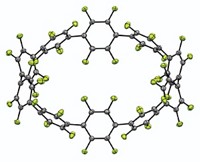Advertisement
Grab your lab coat. Let's get started
Welcome!
Welcome!
Create an account below to get 6 C&EN articles per month, receive newsletters and more - all free.
It seems this is your first time logging in online. Please enter the following information to continue.
As an ACS member you automatically get access to this site. All we need is few more details to create your reading experience.
Not you? Sign in with a different account.
Not you? Sign in with a different account.
ERROR 1
ERROR 1
ERROR 2
ERROR 2
ERROR 2
ERROR 2
ERROR 2
Password and Confirm password must match.
If you have an ACS member number, please enter it here so we can link this account to your membership. (optional)
ERROR 2
ACS values your privacy. By submitting your information, you are gaining access to C&EN and subscribing to our weekly newsletter. We use the information you provide to make your reading experience better, and we will never sell your data to third party members.
Synthesis
Teaching Zinc A New Trick
ACS Meeting News: Chemists revisit using zinc reagents as a means of transferring fluoroalkyl groups into synthetic building blocks and polymers
by Stephen K. Ritter
March 24, 2014
| A version of this story appeared in
Volume 92, Issue 12

Metallacyclobutanes hold a special place in synthetic chemistry as intermediates in the olefin metathesis reactions that have revolutionized the way chemists make small molecules and polymers. David A. Vicic of Lehigh University reported that his group has taken a step toward using this approach to make new types of fluorinated small molecules and polymers. The key, he suggested, is using metallacyclic zinc reagents bearing fluoroalkyl groups. Current routes to fluorinated metallacycles use tetrafluoroethylene gas, which works well for adding C2F4 and C4F8 units via radical addition reactions. But the gas is hard to handle and leaves a significant environmental footprint. Vicic and his team developed an alternative metathesis route using metallacyclic dizinc reagents that incorporate C3F6 and longer fluoroalkyl units into molecules without directly using tetrafluoroethylene (Organometallics 2013, DOI: 10.1021/om401016k). The team prepared the reagents from diethylzinc and I(CF2)nI (n = 3, 4, or 6). The fluoroalkyl units can be transferred via a copper-mediated process to aryl iodides to form bicyclic fluorinated organometallic ring systems or ring systems with perfluoroalkyl linkers (shown). These compounds could serve as skeletons for medicinal or materials applications. The Lehigh team has filed a provisional patent on the method.





Join the conversation
Contact the reporter
Submit a Letter to the Editor for publication
Engage with us on Twitter